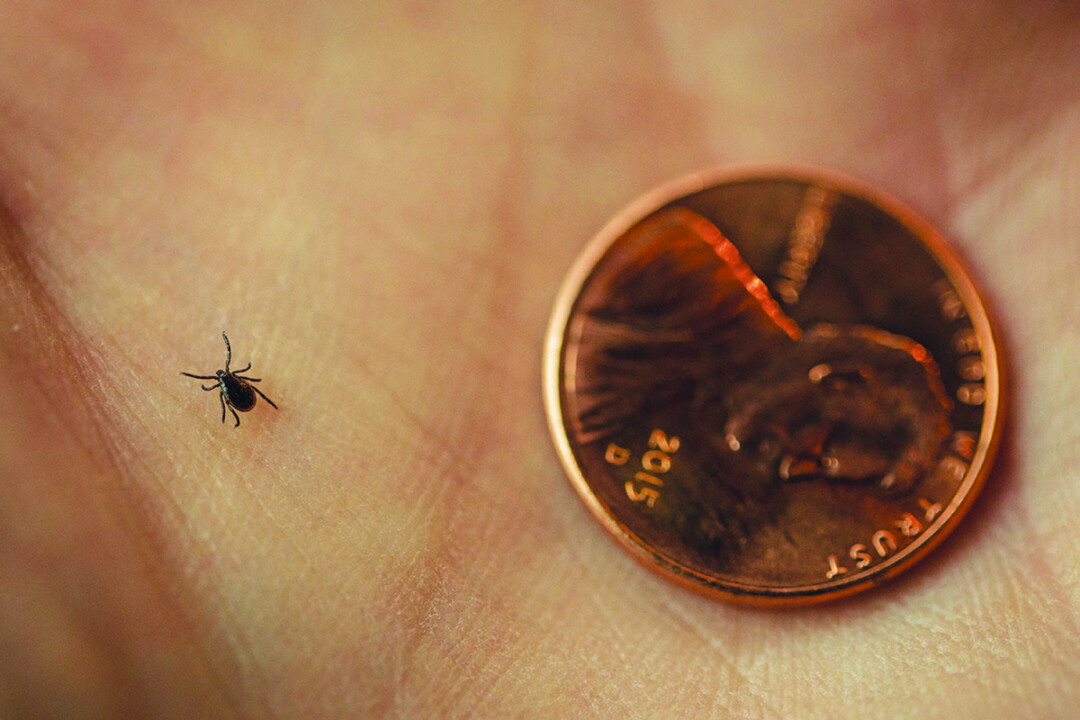Getting Outside? Here’s How to Avoid Nasty Ticks
summer brings sunshine, warmer weather — and these little buggers
Eau Claire City-County Health Department, photos by Justin Patchin |

Summer brings sunshine, warmer weather — and ticks. Even in springtime, when ground temperatures are above 45 degrees, ticks become more active. Three different types of ticks are found in Eau Claire County. The Deer tick and Wood tick are the most common, while the Lone Star tick is also found in lower numbers. Ticks can carry bacteria and viruses that can cause disease in humans. Lyme disease is a common disease that is transmitted from Deer ticks. In 2021, there were 89 reported cases of Lyme disease in Eau Claire County. The actual number of cases is probably much higher.
“We want to help protect you, your family and your pets from tick diseases this summer so you can continue to enjoy the outdoors,” says Savannah Bergman, a chemist-microbiologist with the Eau Claire City-County Health Department.
How to prevent tick bites:
• Use repellents with 20-30% DEET (or an alternative active ingredient) on exposed skin and clothing.
• Permethrin is effective against tick bites. It lasts for days to weeks on your clothing. Do NOT apply on skin.
• ALWAYS help children apply repellents. Apply according to the labeled instructions.
• NEVER apply repellents to infants under 2 months of age.
Check with your veterinarian for tips to prevent Lyme disease in your pets.
After being outdoors …
• Check yourself, your children and your pets for ticks. (Check the armpits, scalp, and groin areas!)
• Take a shower or bath as soon as possible. This will wash off any unattached ticks from your body.
• Toss your clothes in the dryer on high heat to kill any remaining ticks.
10 minutes for dry clothes. 60 minutes for wet clothes
How to remove a tick:
• Remove ticks as soon as possible. In most cases, ticks must be attached for 36-48 hours or more before Lyme disease can be transmitted.
• Use tweezers to grasp the tick as close to the skin as possible.
• Pull up with steady, even pressure. Don’t twist or jerk the tick. This may cause the mouth parts to be left in your skin.
• After the tick is removed, clean the area thoroughly with soap and water.
For more information about tick-borne diseases, visit ticks.echealthdepartment.org or visit www.cdc.gov/ticks.






















